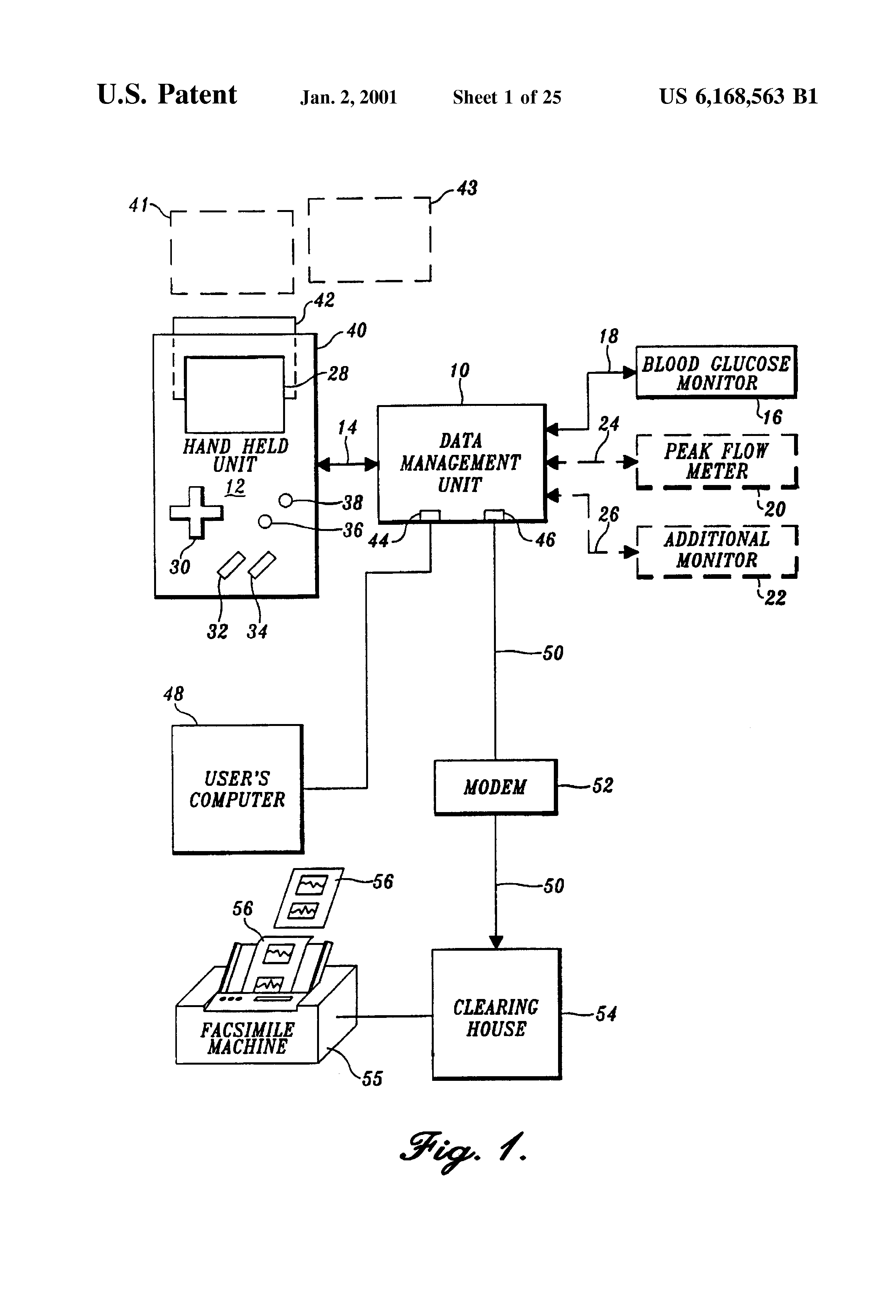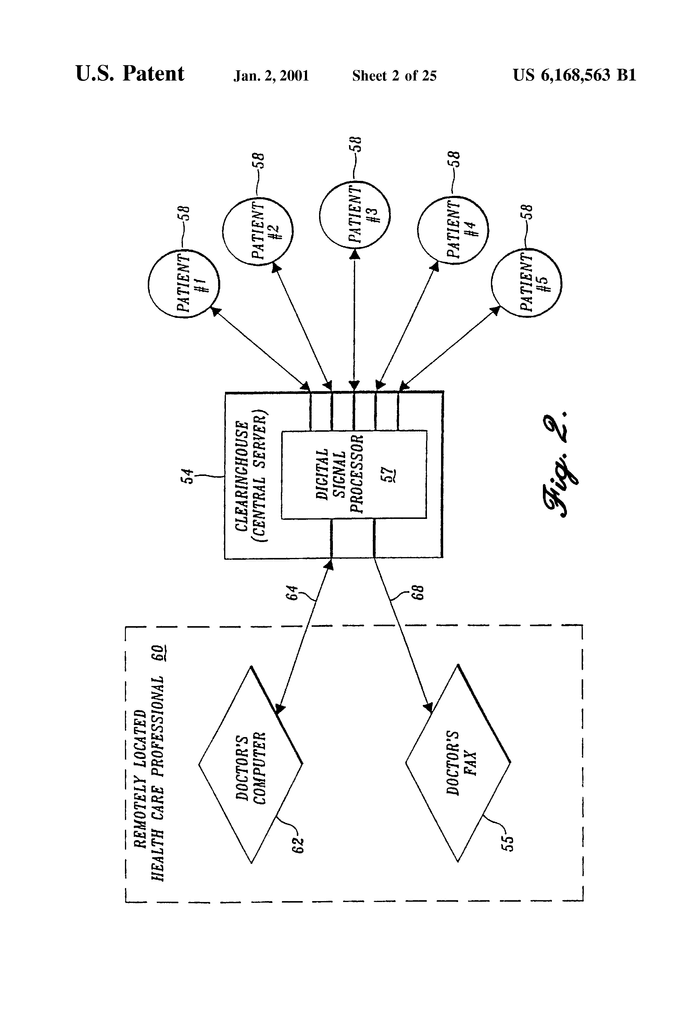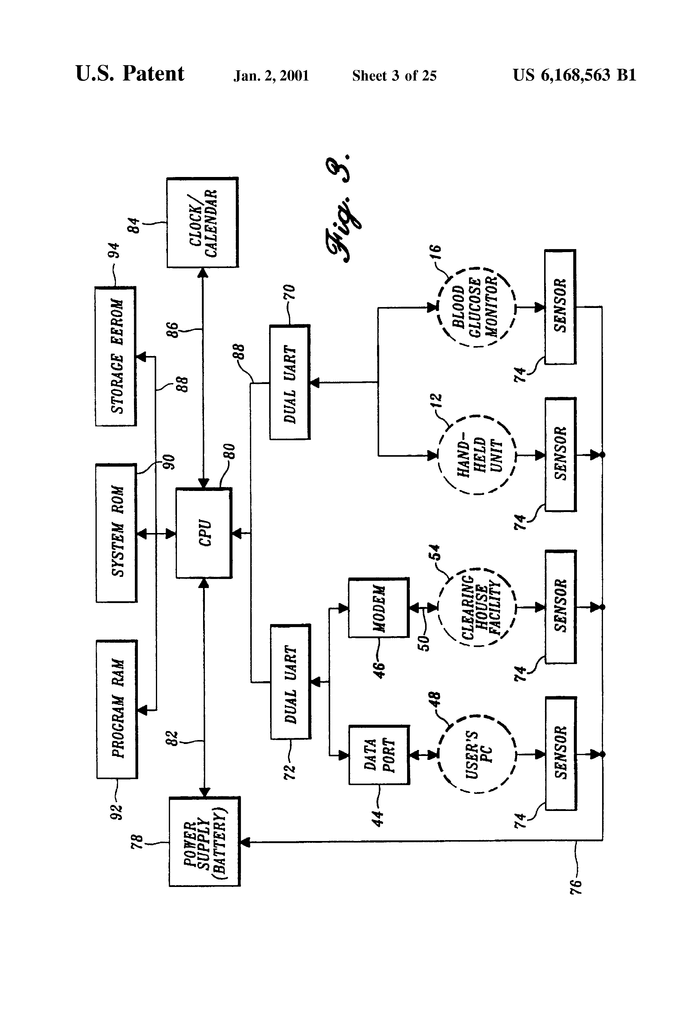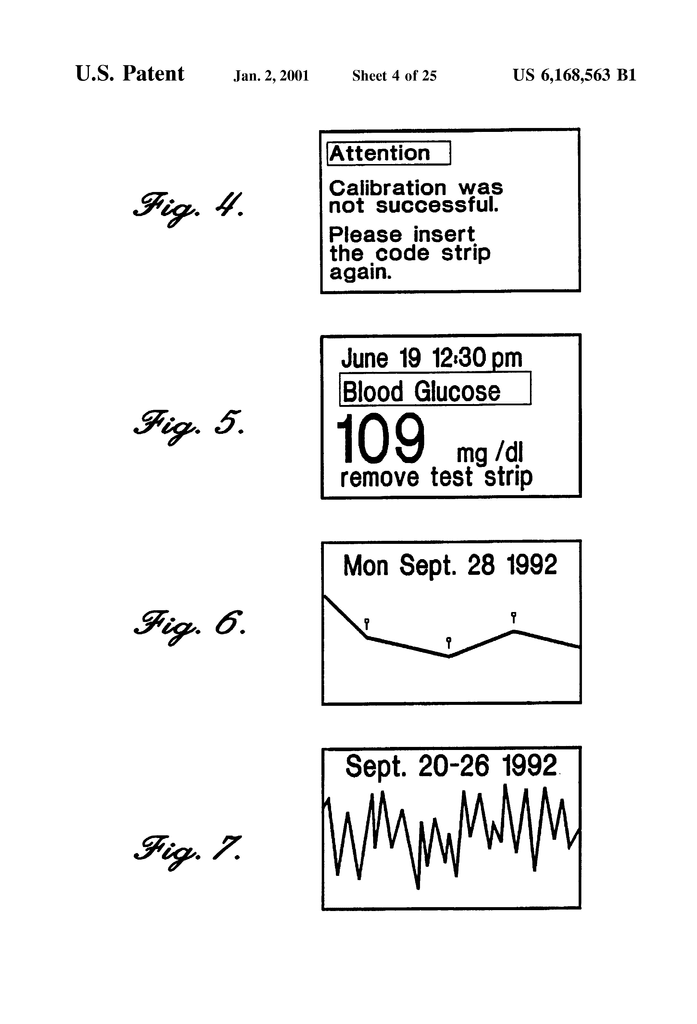Invented by Stephen J. Brown, Robert Bosch Healthcare Systems Inc
The market for remote health monitoring and maintenance systems is expected to grow significantly in the coming years, driven by factors such as an aging population, rising healthcare costs, and the increasing prevalence of chronic diseases. According to a report by Grand View Research, the global remote patient monitoring market size was valued at $703.7 million in 2019 and is expected to grow at a compound annual growth rate (CAGR) of 13.7% from 2020 to 2027.
One of the key drivers of this growth is the increasing adoption of wearable devices and other connected health technologies. These devices allow patients to track their vital signs, medication adherence, and other health metrics, and can transmit this data to healthcare providers in real-time. This allows providers to monitor patients more closely, identify potential health problems before they become serious, and intervene earlier to prevent complications.
Another factor driving the growth of the remote health monitoring market is the increasing focus on value-based care. As healthcare providers shift towards a more outcomes-based approach, they are looking for ways to improve patient outcomes while reducing costs. Remote health monitoring systems can help achieve both of these goals, by reducing the need for costly hospitalizations and emergency room visits, and by improving patient adherence to treatment plans.
There are a variety of different types of remote health monitoring and maintenance systems available on the market today, ranging from simple wearable devices to more complex systems that incorporate artificial intelligence and machine learning. Some of the key players in this market include Philips Healthcare, Medtronic, Honeywell Life Care Solutions, and GE Healthcare.
Despite the many benefits of remote health monitoring and maintenance systems, there are also some challenges that must be addressed. One of the biggest challenges is ensuring that patients are able to use these systems effectively, and that they are able to understand the data that is being collected. Healthcare providers must also be able to integrate this data into their existing workflows and electronic health record systems, in order to make it useful for clinical decision-making.
In conclusion, the market for remote health monitoring and maintenance systems is poised for significant growth in the coming years, driven by factors such as an aging population, rising healthcare costs, and the increasing focus on value-based care. While there are certainly challenges that must be addressed, the potential benefits of these systems are clear, and they have the potential to revolutionize the way that healthcare is delivered and managed.
The Robert Bosch Healthcare Systems Inc invention works as follows
A system and a method are described which enable a healthcare provider to monitor and maintain a patient’s health. The system includes two components: a health-care provider apparatus controlled by a provider, and a remotely-programmable patient apparatus controlled by the patient. The health care providers develops a script using the health provider apparatus, and sends it to a remotely programmed patient apparatus via a communication network like the World Wide Web. The script program is an interactive patient protocol which monitors and interacts with the patient by asking questions to the patient and receiving their answers. These answers are sent as patient data by the remotely programmable apparatus to the health provider apparatus via the communication network. Patient data can also be information from a physiological monitor, such as a glucose monitor, that is connected to a remotely programmable apparatus. The patient data will be processed by the health provider to further manage the patient’s condition. For example, sending another script program to a remotely programmable apparatus.
Background for Remote health monitoring and maintenance system
Controlling or curing ill-health conditions generally requires both the establishment of a therapeutic programme and the monitoring of the progress of the affected person. On the basis of that progress, it is possible to make decisions about how to change therapy in order to cure or control an affliction. In order to successfully treat certain health conditions, it is necessary to monitor them frequently and have a high level of patient involvement. To establish and maintain an effective diabetes care regimen, a diabetic must monitor their blood glucose levels and record the information, along with the time and date of the monitoring. Diet, exercise and medication can all have an impact on blood glucose levels. A diabetic must often record information relating to these items along with the blood glucose level. This allows the diabetic to more closely monitor their condition.
The advancements in electronics have led to significant changes in medical equipment for monitoring and diagnosing chronic conditions, as well as arrangements that allow self-care monitoring. In the area of controlling and monitoring diabetes, inexpensive and easy-to use blood glucose monitoring devices are now available. They provide reliable information to allow a diabetic to set up, monitor, and adjust their treatment plan (diets, exercises, and medications). Microprocessor-based glucose monitoring systems, which detect the blood sugar level by applying a sample of blood to the reagent-impregnated area of the test strip inserted into the glucose monitor are now being marketed. The blood glucose level will be displayed, for instance, by a LCD unit, when the monitoring sequence has been completed.
Self-care blood sugar monitoring units typically include a clock/calendar circuit and a memory that allow a number blood glucose test results, along with the time and date of the testing to be stored. By sequentially pressing a button on the monitor, the stored test results can be recalled by the user of the blood glucose monitor or by a healthcare professional for review. Some commercially available devices display the average blood glucose result stored in the monitor, or the average results over a specified period, such as 14 days, during the recall sequence. Some self-care glucose monitors also allow the user the option to mark the test results with an “event code”. This can be used as a way to categorize the results. A user could use an event code for example to identify results taken at certain times during the day. Another event code might be used to identify readings obtained after exercise. Two additional codes may be used to identify readings obtained when hypoglycemia or hyperglycemia is present. If event codes are used, they will be displayed next to each blood glucose test result.
Microprocessor-based blood glucose monitoring systems have advantages other than the capability of obtaining reliable blood glucose test results and storing a number of the results for later recall and review. The use of low-power microprocessors and memory circuits, and the powering of the units by small, high-capacity batteries (e.g. a single alkaline), has allowed for extremely compact and lightweight designs that allow the user to take the blood glucose monitor system with them wherever they go, without anyone noticing. Most microprocessor-based blood glucose monitoring devices have a large memory that can be programmed to display instructions for the user during system and calibration tests, as well as during the actual blood glucose test. The system also monitors the various conditions of the system during a glucose test, such as whether the test strip has been properly inserted into the monitor, and whether enough blood is applied to the reagent-impregnated portion on the strip. If an error is detected, an appropriate display is generated (e.g. “retest”). The system may include a data connector that allows the test results from the microprocessor-based glucose monitoring system to transfer to a data connection (e.g. RS-232) on a computer or similar device for analysis.
Microprocessor-based blood glucose monitoring systems are a significant advance over previously available self-care systems such as those requiring a diabetic to apply a blood sample to reagent activated portions of a test strip; wipe the blood sample from the test strip after a predetermined period of time; and, after a second predetermined period of time, determine blood glucose level by comparing the color of the reagent activated regions of the test strip with a color chart supplied by the test strip manufacturer. There are still many disadvantages and drawbacks despite the progress made. In order to establish and maintain diabetic healthcare, the diabetic must often record additional information pertaining to food intake, medication and exercise. The event codes on the microprocessor-based blood glucose monitoring system available today are limited in their ability to tag and track blood glucose test result based on food intake or other relevant factors. The event codes on the currently available monitoring system only allow users to categorize stored blood glucose results in a way that identifies blood glucose tests immediately following a heavy meal, a light meal, or a normal one. This method of recording data not only requires subjective judgement by the system’s user, but it will also not suffice when successfully controlling a user’s type 2 diabetes requires recording and tracking relatively accurate information about food intake, medication, exercise or dosage (e.g. insulin). The current blood glucose monitoring system loses an important advantage when quantitative data relating to food, exercise, and medication is recorded. The system user is required to record all the necessary information, including the time and date of the blood glucose test, in a logbook.
The use event codes for subcategories in blood glucose test results is a disadvantage or drawback. The microprocessor based blood glucose monitors use alphanumeric displays, but the units can only display a single six-character line. Since the systems do not allow the user to input alphanumeric data, event codes must be displayed in a generic way, such as “EVENT 1”, “EVENT 2”, etc. The system is more difficult to use due to this limitation. Diabetics must memorize their event codes, or keep a list of them. This limitation of the amount of information that can be displayed in a single instance has additional disadvantages. The user must first read the instructions and diagnostics displayed when calibrating and using the system in order to get a reading of blood glucose. This information is displayed one line at a given time, and often in a cryptic way.
The above-discussed limitations of the display and other aspects in blood glucose monitoring devices currently available are disadvantageous from another perspective. The user can only access a limited amount of statistical data. In diabetic healthcare, for example, fluctuations or changes in blood glucose over a period of a day, week or even longer can be valuable to the diabetic or his/her healthcare provider. As mentioned previously, the current systems do not permit the association of blood glucose test results to quantitative information about medication, food intake or other factors, such as exercise, that may affect a person?s blood sugar level at a particular time. The current blood glucose monitoring systems are unable to generate and display trend information, which may be valuable for diabetics or their healthcare professionals.
Some of the current blood glucose monitors have a data port which can be connected to a computer and transferred data (e.g. via RS-232). A suitable computer programmed with such a system allows the user to generate and display trend data or other information that can be helpful in administering their treatment plan. In such systems, the user can also transfer data from the blood sugar monitoring system directly to the computer of a healthcare professional, or by phone, if the computer and the blood sugar monitoring system, to which the downloaded data was transferred, are both equipped with modems. This data transfer feature allows a healthcare provider to analyze the blood glucose data collected from a diabetic. However, it is not widely used. The system can only use this feature if the user has a computer with the appropriate software installed and is able to access it. The same problem occurs when data is transferred to (and analyzed by) a healthcare provider. The data formats used by different manufacturers are not the same. If a healthcare professional wants to analyze the data from a variety of blood glucose monitoring devices, they must have software for each system and learn how to perform the analyses.
The disadvantages and shortcomings of microprocessor based self-care monitoring systems are magnified in children with chronic diseases such as diabetes, asthma or other chronic conditions. The need for medications and other therapies changes with a child as they grow. The current microprocessor-based health monitoring systems do not give enough information to a healthcare professional in order for them to identify and prevent problems before they become severe. “Too often, the need for a new medication or other therapeutic changes is not discovered until the child’s health worsens and emergency room care becomes necessary.
Further, the current microprocessor-based systems for monitoring health were not designed with children’s needs in mind. As mentioned previously, these devices are not designed for ease of use when it is necessary or desirable to record and track numerical information that impacts the physical condition of system users (e.g. medication dosage administered by diabetics and food intake). Children who are older than the age when they can generally obtain blood samples, administer insulin or other medications and use the microprocessor-based systems for blood glucose monitoring can generally learn how to use the basic features. The current monitoring systems do not provide any motivation to a child in order for them to use the device. They also don’t include anything that would educate the child on his or her condition and treatment progress.
The lack of support for alphanumeric input can also be a problem. For example, the current blood glucose monitoring system does not allow users or healthcare professionals to enter data into the system. This includes medication dosages and other instructions that are relevant to a user’s health self-care program.
The above-discussed drawbacks and disadvantages of microprocessor-based systems for monitoring blood sugar levels also have been obstacles to adopting this basic technology for other healthcare situations where establishing and sustaining an effective regimen of cure or control depends on (or is at least facilitated) regularly monitoring a condition, recording it along with time and dates tags and any other information that may be helpful or necessary in setting up and maintaining a health program.
Over 100 million Americans have chronic conditions. This accounts for $700 billion annually in medical expenses. Many healthcare providers offer outpatient and home healthcare services to their patients in an attempt to reduce medical costs. These programs can be especially beneficial for patients with chronic illnesses who have to treat their disease on a daily basis. These programs are only possible if healthcare providers can remotely monitor patients to prevent costly and complicated medical issues. The poorest and elderly have the most pressing need for monitoring. Unfortunately, there is no cost-effective and convenient monitoring system.
Prior attempts at remotely monitoring patients included modems and personal computers to establish communication between patients, healthcare providers and patients. Computers are too costly to give away, and patients with computers are just a fraction of the population. Computer owners are often young and well-educated, with good healthcare coverage. These patients don’t have the greatest unmet health needs. Patients with the greatest unmet medical need are those who are poor or elderly and don’t have computers, or are not familiar with using them.
Internet terminals and the Internet have been used in similar attempts to establish communication between healthcare providers and patients. Internet terminals, although less expensive than personal computers but still prohibitively expensive for patients to receive, are not available. Monthly online access fees are also prohibitive for the poorest patients.
Other methods of remotely monitoring patients include the use medical monitoring devices that have built-in modems. These devices can be used to monitor blood glucose, heart rate, and respiratory flow. These monitoring devices can only collect physiological data from patients. These devices do not allow for dynamic and flexible querying of patients for additional information such as quality-of-life measures or psychosocial variables of illness.
The use of interactive video or telephone response systems has also been used in previous attempts to monitor patients remotely. Patents in the U.S. disclose interactive systems of this type. Nos. Nos. Tamura received 5,434,611 on July 18, 1995. Tamura received 5,434,611 on July 18, 1995. David et. al. On Aug. 15, 1995. The disadvantage is that these systems require patients to either call a central facility for monitoring or the central facility must call them according to a rigid schedule.
If patients are required to call the central center, only compliant patients will call regularly to be monitored. Patients who are not compliant will wait until an emergency occurs before calling the central facility. This defeats the purpose of the monitoring system. The central facility calling each patient according to a monitoring plan is disruptive to their lives and increases patient resistance to it.
Poor patients will also find them prohibitively costly. These systems are also difficult to identify every patient individually. These systems cannot collect medical data from monitors such as heart rate monitors, blood glucose meters, and respiratory flow meters.
OBJECTS & ADVANTAGES OF AN INVENTION
In light of all the above, the object of the invention is to provide an inexpensive and simple system for remotely monitoring patients and communicating information to them. Another object of the invention is to allow dynamic and flexible querying of patients. The invention also aims to create a system that combines querying patients with monitoring of medical devices in one monitoring session. The invention also aims to create a monitoring system that charges less than conventional systems. Another object of the invention is to provide an easy-to-use monitoring system that can be used whenever it’s convenient for the patient.
Click here to view the patent on Google Patents.





